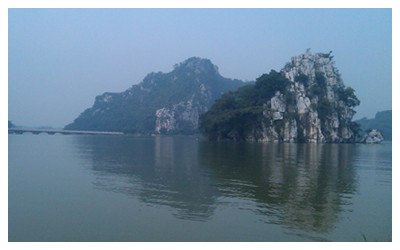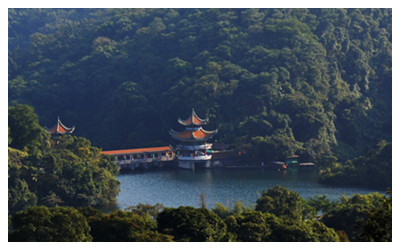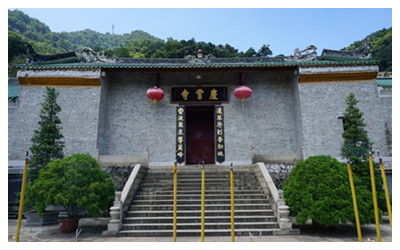Skype: neodalle-travel
Tel: +86 135 7447 2266
E-mail: sales@visitaroundchina.com
The Seven Star Crags
 The arrangement of these seven crags in the limestone mountains matches closely that of the stars of the Big Dipper, and thus the name "Seven Star" was given to them on the basis of a legend that they were formed from the remnants of seven stars that fell out of the sky into the adjacent lake.
The arrangement of these seven crags in the limestone mountains matches closely that of the stars of the Big Dipper, and thus the name "Seven Star" was given to them on the basis of a legend that they were formed from the remnants of seven stars that fell out of the sky into the adjacent lake.
Xinghu means 'Star Lake', and this designation is derived from the seven crags that are found along its shores. To get a great view of the crags, one can climb the stair step sides of one of them and view the remaining six and the lake from a pavilion built on its top.
The crags are decorated with hundreds of cliff-side inscriptions dating from the Tang Dynasty (618–907), which are much studied by art historians and scientists alike. These crags have been the long-sung subject of ancient Eastern poetry, being described in many a haiku. There is also a religious significance attached to the caves in that Buddhist temples are found in and near them.
Dinghu Mountain National Nature Reserve
 Since 1956, it has been the first nature preserve in China, known as a "living museum". Dinghu Moutain houses hundreds of species of plants, animals, and birds, dozens of them under state protection. It is now also a UNESCO International Man and Biosphere Reserve, making it a magnet for worldwide "scientist tourism".
Since 1956, it has been the first nature preserve in China, known as a "living museum". Dinghu Moutain houses hundreds of species of plants, animals, and birds, dozens of them under state protection. It is now also a UNESCO International Man and Biosphere Reserve, making it a magnet for worldwide "scientist tourism".
Wildlife : The plant and animal life vary according to elevation, allowing a taste of numerous mini-habitats all in one location. Evergreen and broadleaf forests comingle on the mountain's heights and cover some 80% of the reserve's terrain.
Without the life-giving annual rains, the mountain would soon dry up and die. But instead it is a towering jungle of life. Many of its plants are of great medicinal value. Guangdong Province's state bird, the silver pheasant makes its home there in this sub-tropical paradise. Leopards, serows, and 20 species of pythons (watch out!) also make their home on the green slopes of Mount Dinghu.
Learn a little about China's history and biospheres before arriving so this Chinese national treasure can be that much more appreciated.
 Buddhist Sacred Site: Consisting of about one kilometer of crag hills, the Lying Buddha in Star Lake appears with striking resemblance. In late September every year, the rare wonder of the Lying Buddha Keeping the Sun in Mouth will come on the scene, which is the setting sun descends slowly to the Buddha’s mouth. Among the most popular of Dinghu's tourist stops are Baoding Park, the ancient Buddhist temple of Qingyun, and the Flying Waterpool. The "green gem of the Tropic of Cancer" also has an ancient Buddhist sacred site.
Buddhist Sacred Site: Consisting of about one kilometer of crag hills, the Lying Buddha in Star Lake appears with striking resemblance. In late September every year, the rare wonder of the Lying Buddha Keeping the Sun in Mouth will come on the scene, which is the setting sun descends slowly to the Buddha’s mouth. Among the most popular of Dinghu's tourist stops are Baoding Park, the ancient Buddhist temple of Qingyun, and the Flying Waterpool. The "green gem of the Tropic of Cancer" also has an ancient Buddhist sacred site.
Here in the beautiful Star Lake National Wetland Park there are not only tens of thousands of birds of different varieties, but also the biggest red crowned crane group in China. Here you can see group of aigrets in flight or the red crowned, what is called the Guardian Spirit of Wetland, cranes flying in line.
Travel Tips
Add; Zhaoqing City,Guangdong Province
Entrance Fee: CNY
Opening Hours: 08:00-18:00
 Ask Questions ?
Ask Questions ?